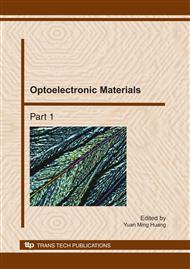p.930
p.934
p.939
p.943
p.947
p.952
p.956
p.961
p.965
Bending Angle Estimated Based on Inherent Strain Theory during Laser Forming
Abstract:
Laser forming process analyzed under thermo-elasto-plastic finite element method can better understand the forming mechanism. However, it is very time consuming. This paper introduced the prediction of the deformation in laser forming based on the theory of inherent strain by finite element method (FEM). The relations between inherent strains and laser forming parameters based on some experimental curves and the thermo-elasto-plastic analysis can be determined, in which the inherent strains are assumed to be distributed in a rectangle shape. This method is much more convenient because only elastic analysis is involved. The effectiveness of the proposed method is demonstrated through the comparison with the experimental data.
Info:
Periodical:
Pages:
947-951
Citation:
Online since:
November 2010
Keywords:
Price:
Сopyright:
© 2011 Trans Tech Publications Ltd. All Rights Reserved
Share:
Citation:


